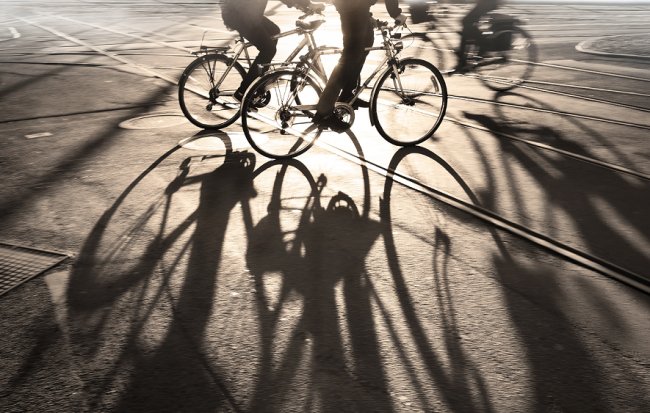As with most Western inventions of the 19th and early 20th centuries, bicycles landed in Korea relatively recently.
Although it has not been confirmed, Korean independence fighter Soh Jai-pil, also known as Philip Jaisohn, is credited to be the first Korean man to ride one on local soil in 1896.
After the 1950-1953 Korean War, bicycles gradually became more commonplace and gave rise to a thriving industry with local manufacturers punching out nearly 1.2 million bikes in 1994.
Over the years, bicycles have been used in many areas of life in Korea.

For many years, before motorcycles and mopeds took over, they were the favored means of transport for those delivering goods.
For a long time, before the rise of handheld IT devices, they topped the wish lists of many children, and riding around the block with friends after school was a popular pastime.
In more recent years, however, bicycles have become popular with adults.
More and more people are opting to pedal their way to work, and bicycle clubs for adults can easily be found in many walks of life from universities and corporations, to online communities.
“Bikes are great. I use mine to exercise on off-days. I think it’s better than going to a gym to sit on those bikes that don’t even go anywhere,” a 60-year-old taxi driver said, declining to be named.
“Mine is not expensive, but a friend of mine has spent 10 million won ($8,800) or something like that on his bike over the years.”
As adults who have deeper pockets turn their eyes to bicycles, the range of products and prices has exploded in recent years.
Some of the more professional bicycles, particularly imported brands, can easily cost more than a city car — the likes of GM’s Spark and Kia’s Morning.
Many local governments have also embraced the trend. Many major cities, including Seoul, are now equipped with bicycle lanes. Some, such as Seoul and Goyang in Gyeonggi Province, provide rental bicycles.
Some are hoping to use bicycles as the vehicle for conveying a particular message.
Former Culture Minister Yu In-chon and 49 others recently embarked on a bicycle journey to Japan with bikes. The group, consisting of Koreans and Japanese, will follow the route taken by the Joseon king’s messengers to Japan some 400 years ago. The organizers of the 1,900-kilometer journey hope to convey a message of reconciliation and cooperation to Korea and Japan.
The rising popularity of bicycles is not without its downsides.
With more and more people taking off on two wheels, accidents involving bicycle riders have increased significantly over the recent years.
According to Seoul Metropolitan Government data, the number of accidents involving bicycles went from just over 2,800 in 2010 to over 4,000 last year.
As the number of bikes rises, bicycle thefts have also risen but the exact number of bicycle thefts remains unclear as many owners opt not to make a police report.
However, it is not only the authorities who are having to deal with problems that come with more bikes being on the road.
“My neighbor keeps his bikes in the stairwell at my apartment and they block the way, and sometimes even make it inconvenient for me to open my own door,” said Kim Bo-eun, an office worker who lives in Goyang, Gyeonggi Province.
“Also, the bike rack in my apartment is filled with old, unused bikes. Those bikes rusting is one thing, but I think they might attract thieves.”
By Choi He-suk (cheesuk@heraldcorp.com)



